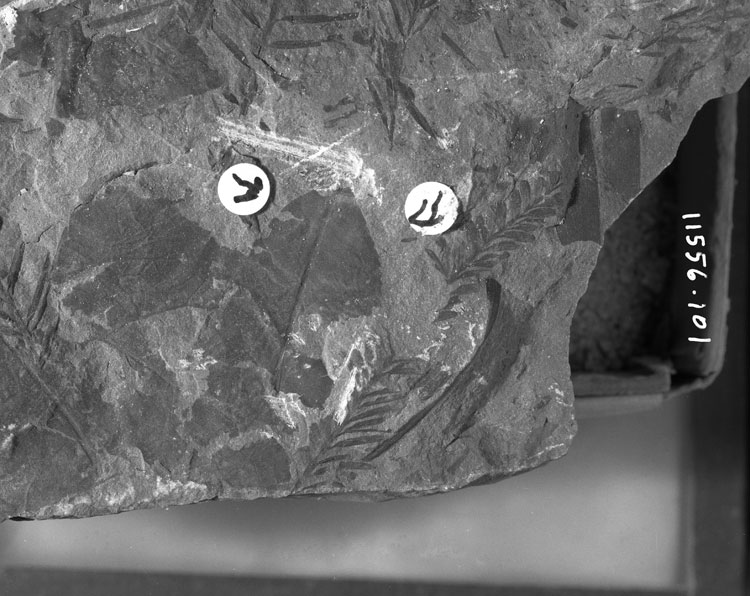Locality
Yukon-Koyukuk Basin Locality 11556
Description
Leaf or leaflet: symmetrical; shape elliptical (?); apex missing; base decurrent, acute or cuneate; margin serrate except at base where entire; teeth small, axis of tooth strongly inclined towards leaf apex, tooth apex acute, glandular, apical side concave, basal side long convex, sinus acute, rounded non-glandular; venation pinnate, semicraspedodromous; primary midvein stout, straight; secondary veins weak, departing midvein at approximately 40° initially recurved, then straight, oriented at 50° to midvein near base increasing to 70° or more halfway along lamina, curved near margin, looping to join superadjacent secondary at an acute angle; third or fourth order loops may be present, branching to run to apex of teeth; composite intersecondary veins present; third and higher vein orders indistinct.
Remarks
This well preserved, though incomplete specimen possesses, what appears to be Monimioid teeth. The glandular cap is not evident but its presence or absence would be difficult to determine in the fossil state. The tooth venation is consistent with the Monimiod type having a semicraspedodromous branch of a secondary vein entering the tooth medially. There is some evidence that weak laterals join the medial vein but they do so outside the tooth as in extant examples such as Hedycarya arborea Forster (Monimiaceae) and Trimenia Seemann (Trimemaceae) as illustrated in Hickey and Wolfe (1975, Figs. 8C and 8D). Possible similarities to the Rosoid or Cunonioid type of teeth are discounted because of the lack of veins running to the sinus. The pinnate camptodromous venation with composite intersecondaries is consistent with characters found in the Laurales within which the Monimioid tooth is also found.
